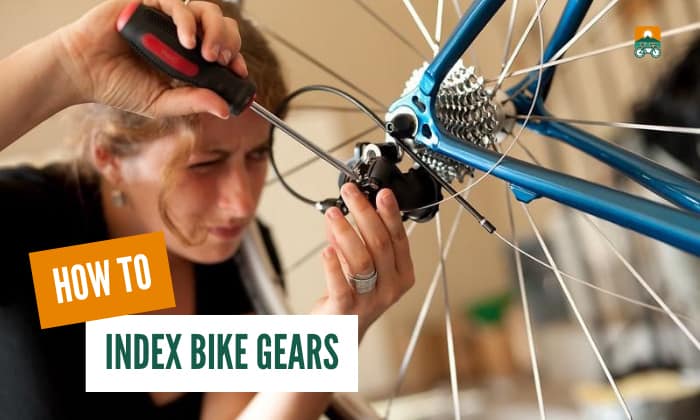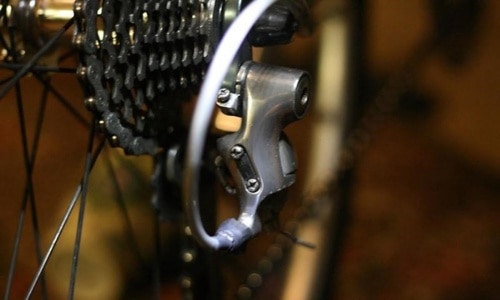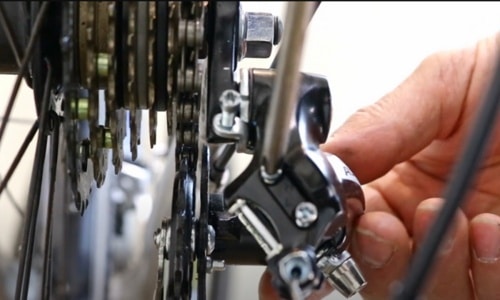If your bike’s been having difficulties shifting gears up or down, or if you’ve been hearing a clicking sound by the gears every time you switch, chances are your bike requires gear indexing. Indexing your gears means adjusting how aligned your derailleur moves the bike chain to its corresponding cog.
Modern derailleurs are designed to move in the exact distance of every gear cassette, making knowing how to index bike gears all the more important, as one small misalignment can affect your bike’s entire performance and could potentially compromise your safety.
Table of Contents
Step-by-step Guide to Index Bike Gears
What to Prepare
- Phillips Screwdriver – most derailleur brands like Shimano, SRAM or Campagnolo use crossed screws for their limit screws
- T30 Allen Key – to unlock your pinch bolt
- Tune-up Stand (optional) – You may also turn your bike upside-down to make adjustments if a tune-up stand is not available.
Step 1: Know your parts
First we must identify the parts of the rear derailleur that we’ll be working with, so when we tackle them in later steps we’ll know which is which. Firstly, let’s introduce you to the limit screws.
Limit screws – These are two adjacent screws located on the back of your derailleur. They adjust the maximum limit the chain can move outside the lowest and highest gears.
- The screw closest to the bike (marked H) adjusts the limit of the highest gear.
- In contrast, the screw furthest away (marked L) adjusts the limit of the lowest gear.
Barrel adjuster – Next is the barrel adjuster, this is the dial that connects your gear cable to your derailleur.
It’s used to adjust how indexed or aligned the gear chain is to your sprocket. For most bikes, it is located on the back of your derailleur. Still, some mountain bikes have the barrel adjuster connected to the shifter on your handlebar.
Pinch bolt – Last is the pinch or cable anchor bolt. This is a hex screw that holds your shifter cable in place.
Step 2: Indexing your Rear Gears
Now that we’re acquainted with our parts, we can start making our bike gear adjustments. We can start to index rear derailleur using the barrel adjuster.
- To use the barrel adjuster, turn the dial clockwise to loosen the cable tension and turn it counterclockwise to tighten.
- If your bike is not shifting to the highest gear, or the smallest outermost cog, you’ll need to loosen the tension.
- Whereas, if you’re having difficulty shifting to the lowest gear, you’ll need to tighten the tension.
When you’ve identified which shifting direction your bike is having problems with, you can determine which gear to start at and which direction to turn your adjuster to start indexing.
- Turn the barrel adjuster accordingly and keep track of how many rotations you make so you know how far you’ve gone.
- Continue pedaling and shifting your gears after every few adjustments.
- If your chain starts to skip gears, turn the adjuster the opposite way to return to its previous setting.
- Once your chain starts shifting smoothly without any clicking sounds or difficulty, then your chain should be adequately indexed.
Step 3: Indexing your Front Gears
Adjusting your front bike gears affects the total indexing of your bike’s gear setup if it’s not well indexed with the rear. Proper alignment also eliminates chain rub, which could damage your derailleur and chain over time.
- First, locate the barrel adjuster, whether it is located either on the shifter or by the middle of the cable, known as an inline adjuster.
- Set the front derailleur to the higher (inner) gear. If you find difficulty shifting to the lower gear, tighten your adjuster by turning it counterclockwise until it shifts easily into the outer gear.
- Watch out for chain rub by setting your rear derailleur to the lowest and highest gears.
If the chain rubs on either side of the front derailleur’s backplate, adjust it accordingly until the chain is aligned and does not touch the backplate.
Step 4: Adjust Limit Screws
So you’ve finished setting up your gears but you noticed that your chain has difficulty engaging with the highest or lowest gears. In this case, you will need to adjust your limit screws.
- Start by setting your bike to high gear and loosening your cable by unlocking the pinch bolt with your Allen key. Begin shifting to the lowest gear by manually pushing the derailleur into the largest cog.
- If the chain comes off the cog and into the spokes, stop pedaling and return the chain into position.
- Tighten the screw marked L to set the limit of the lowest gear. If it subsequently does not let you shift to the lowest gear after tightening, loosen the screw until it reaches a proper limit.
- To set the high gear limit, observe if the pulley below is directly under the high gear. If it is too outward, turn the limit screw marked H counterclockwise to move it inward.
- When you are satisfied with your gear limits, tighten the cable to the pinch bolt until there is good tension.
Troubleshooting Common Issues
After some time, if you still might be encountering issues with the gears after indexing and adjusting, there are several quick tips on troubleshooting and fixing you can consider:
- Are the gears starting to click and stutter when you shift after a while?
You may be experiencing cable stretch caused by wear on the cable. You’ll need to readjust your limit screws to retighten your cable tension.
- Is the chain still coming off from the ends after setting limit screws?
It may be possible that your derailleur hanger is bent due to damage and will be in need of repair.
- Gears are indexed, the derailleur is aligned, and limit screws are set, but the chain is still causing issues?
Check your chain to see if you are dealing with chain wear, which could damage your cassette and crankset if left unchecked. Use a chain checker to see if this is the case, and replace your chain if it is.
While we have covered the basics of ensuring your gears are in good shape, it may also be best to bring your bike to a technician to avoid causing unintended damage to your bike by trying to fix bike gears yourself.
Conclusion
Modern derailleurs are complex yet tough and built for the miles, and they would take you so much further as long as they’re given proper care.
Learning how to index bike gears as well as knowing how to adjust your gear limit are just some of the things any cyclist should know to improve the riding quality and safety of their bicycle, not to mention saving you the time and money to bring it to a repair shop.

“I ride my bike to work for years, but is that enough? Our carelessness towards our surroundings has taken a toll on the environment. And now, everyone is responsible for changes; even the most minor contribution is counted. With this hope and spirit, I started with my partner to establish Biketoworkday to help more individuals commute to their work sites on their bikes.”






